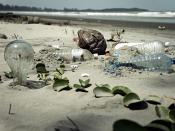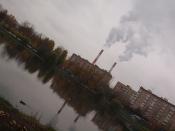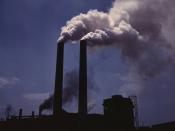Pollution can be defined as the 'harm or damage done to animals/plants and their ecosystems' . Pollution is an externality, the effects of which the costs and benefits are not fully reflected in potential or actual market exchanges. Since no-one owns the atmosphere, there is no market in it and therefore no market price for clean air etc. This means that firms have no incentive not to pollute. This means that forces outside the market must be used in order to ensure the socially optimum level of pollution. In this essay, I will first be tackling what the socially optimum level of pollution means, and then I will be discussing taxes, standards and tradable permits as means of ensuring it. Finally I will be offering loose comparison between them and deciding which of the three options I consider best as a means of achieving the socially optimum level of pollution.
In order to answer this question we must fist resolve what is meant by the socially optimum level of pollution. It is infeasible for example, to have no pollution at all, because no pollution would require no production, therefore some level of pollution must be tolerated. There is an opportunity cost associated with pollution abatement; a cleaner environment requires higher production costs and a lower level of output. The cost of reducing pollution is called the abatement cost, this includes inspection costs, pollution control costs and the value of forgone output due to a reduction in emissions.
The marginal cost of abatement curve (MCA) shows the extra cost of abatement arising from the reduction in pollution by one unit. In the above diagram this is measured by the level of emissions. The steepness of this curve will vary depending on the pollutant. The MCA increases as the units of pollution...


